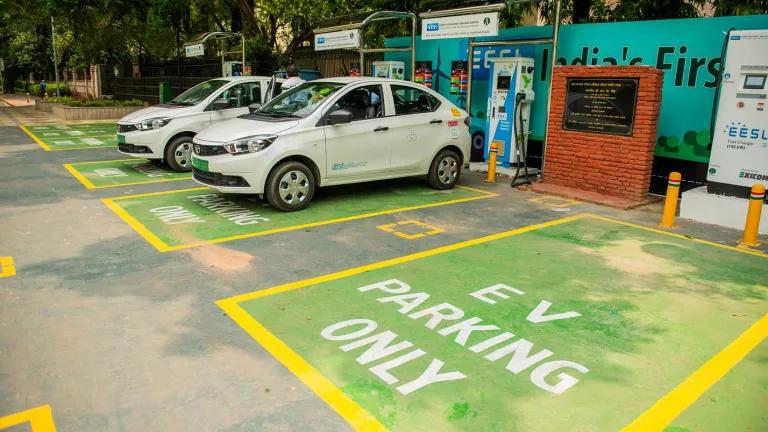Guest Blog by Poonam Sandhu, and Joseph Cordonnier
Climate finance is expected to be a major issue at the upcoming Conference of Parties (COP) 27 in Egypt this November. Developed, industrialized nations are yet to fulfill their commitment to provide adequate funding for climate change mitigating and adaptation. However, it isn't just about the amount of finance but also how it is deployed that can make a big difference in advancing climate goals. With the objective of unlocking finance for the sectors where it is needed most and to develop customized instruments to deploy finance effectively, Natural Resources Defense Council (NRDC) and the Organization for Economic Co-operation and Development (OECD)’s Clean Energy Finance and Investment Mobilisation (CEFIM) have developed a Clean Energy Finance and Investment Roadmap for India.
The Roadmap includes recommendations on enabling tools and financial mechanisms to unlock capital for key sectors of India’s clean energy market. The findings of the Roadmap will be discussed on October 7th at OECD’s Forum on Green Finance and Investment. The Forum will bring stakeholders together and discuss key policy priorities and untapped opportunities to ensure that the global financial system is fit for purpose to translate its commitments on net zero and climate resilience into action. The session, Unlocking Finance and Scaling Up Capital For India’s Clean Energy Ambitions on Friday October 7th at 6:40 AM - 7:40 AM EST, will highlight the key recommendations for three major clean energy segments: offshore wind, green hydrogen production, and energy efficiency measures in micro, small and medium enterprises (MSMEs).

Banner: OECD’s Forum on Green Finance and investment
The development of the Roadmap has been a stakeholder driven process and steered by a committee comprising representatives of ministries of the Government of India, including the Ministries of New and Renewable Energy, Power, and Finance. The steering committee narrowed down the focus of the Roadmap to the financing needs for energy efficiency in MSMEs and the emerging renewable energy (RE) sectors of green hydrogen and offshore wind. These RE sectors are expected to play a crucial role in optimizing the RE mix and in achieving India’s RE targets. The Roadmap estimates $100 billion investments are needed for 37 gigawatts (GW) of offshore and 5 million tons of green hydrogen. Such magnitudes of financing need a robust assessment of financing sources and strategies for the efficient use of public funds to crowd in private capital from domestic sources as well as international climate finance from developed economies.

NRDC-OECD workshop, May 2022
Key recommendations for specific solutions to unlock financing
Over the past year, NRDC and the OECD held a series of stakeholder workshops to examine financing challenges and opportunities and identify solutions to unlock financing for the focus sectors. Following discussions with the steering committee, two specific innovative solutions– an energy savings insurance scheme and a blended finance facility– were selected for further exchanges in focus group discussions. These discussions dived into key elements for the establishment of energy savings insurance and for a blended finance facility. An energy savings insurance model addresses the high-risk perception associated with energy efficiency investments by creating trust among investing firms that eventual savings on energy bills will more than compensate the higher upfront investments required to install energy-efficient technologies instead of conventional ones.
Blended finance structures use development finance from public or philanthropic sources to mobilize private capital. This can be in the form of concessional funding for projects, or it can also provide capital to fund a variety of de-risking instruments and guarantees as well as grants for project preparation and project structuring. This is key for highly capital-intensive, emerging RE sectors like offshore wind and green hydrogen. Blended finance facilities should provide a limited window of ‘concessionality’ to serve the first few gigawatts (until a target cost of energy is achieved), with the objective of lowering risks and the cost of capital to build a self-sustaining private investment market. Workshop participants suggested that the blended finance facility in India could be built on the Green Window concept that was proposed by Indian Renewable Energy Development Agency (IREDA) in 2019. Public concessional funding for the facility could be channeled to designated implementing agencies such as the National Investment and Infrastructure Fund and IREDA.
The Roadmap lays the groundwork to build consensus on next steps in designing and implementing these financial mechanisms to unlock capital for key sectors. Actions such as these to increase climate finance are more imperative than ever, as the impacts and risks of climate change mount in India and around the world. As a country extremely vulnerable to the effects of climate change, India can address climate risks and economic ambitions simultaneously by aligning green investments with economic growth.
Poonam Sandhu is the Financial Sector Expert and Lead consultant with NRDC
Joseph Cordonnier is a Policy Analyst with the CEFIM Programme, OECD




